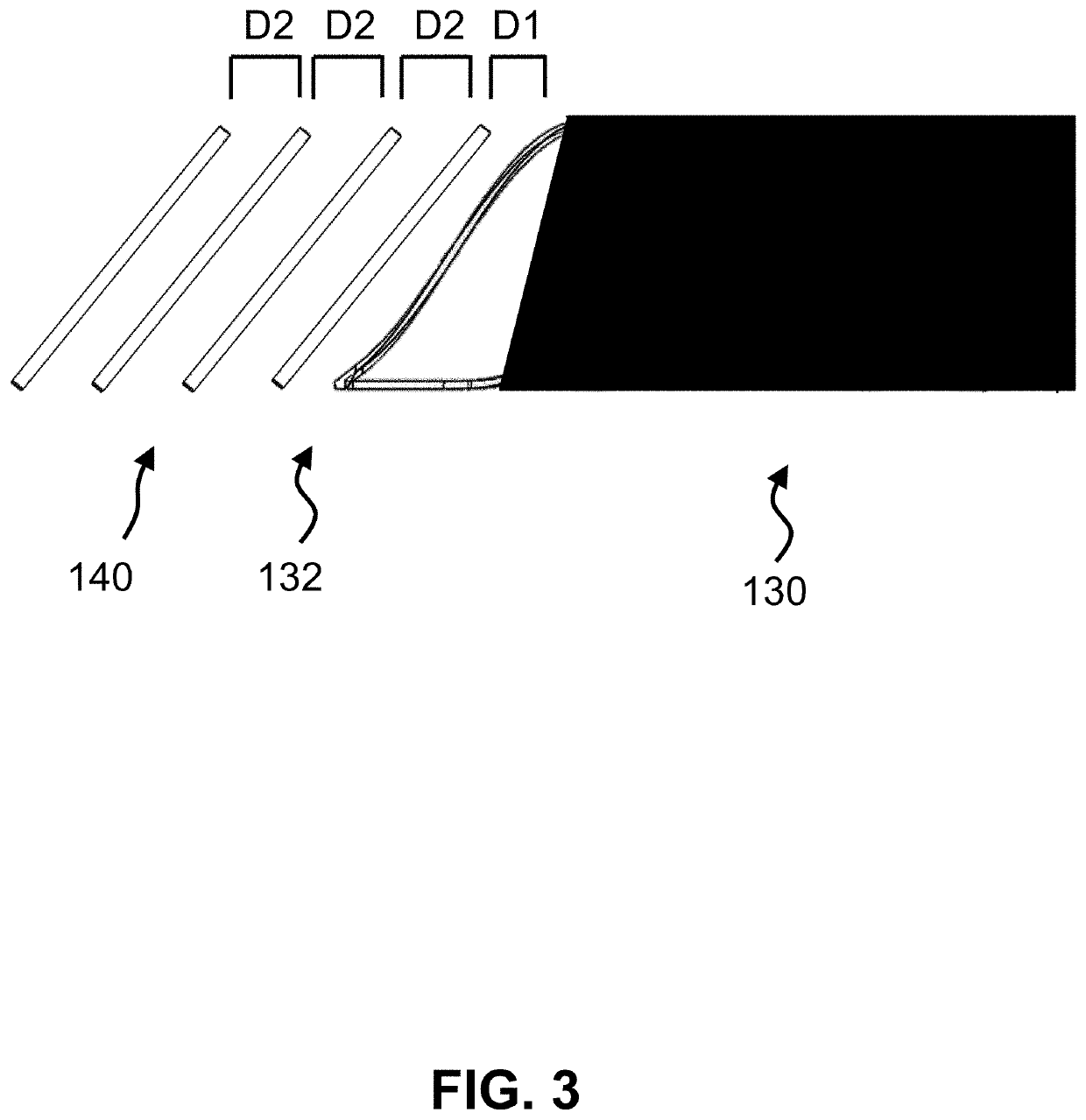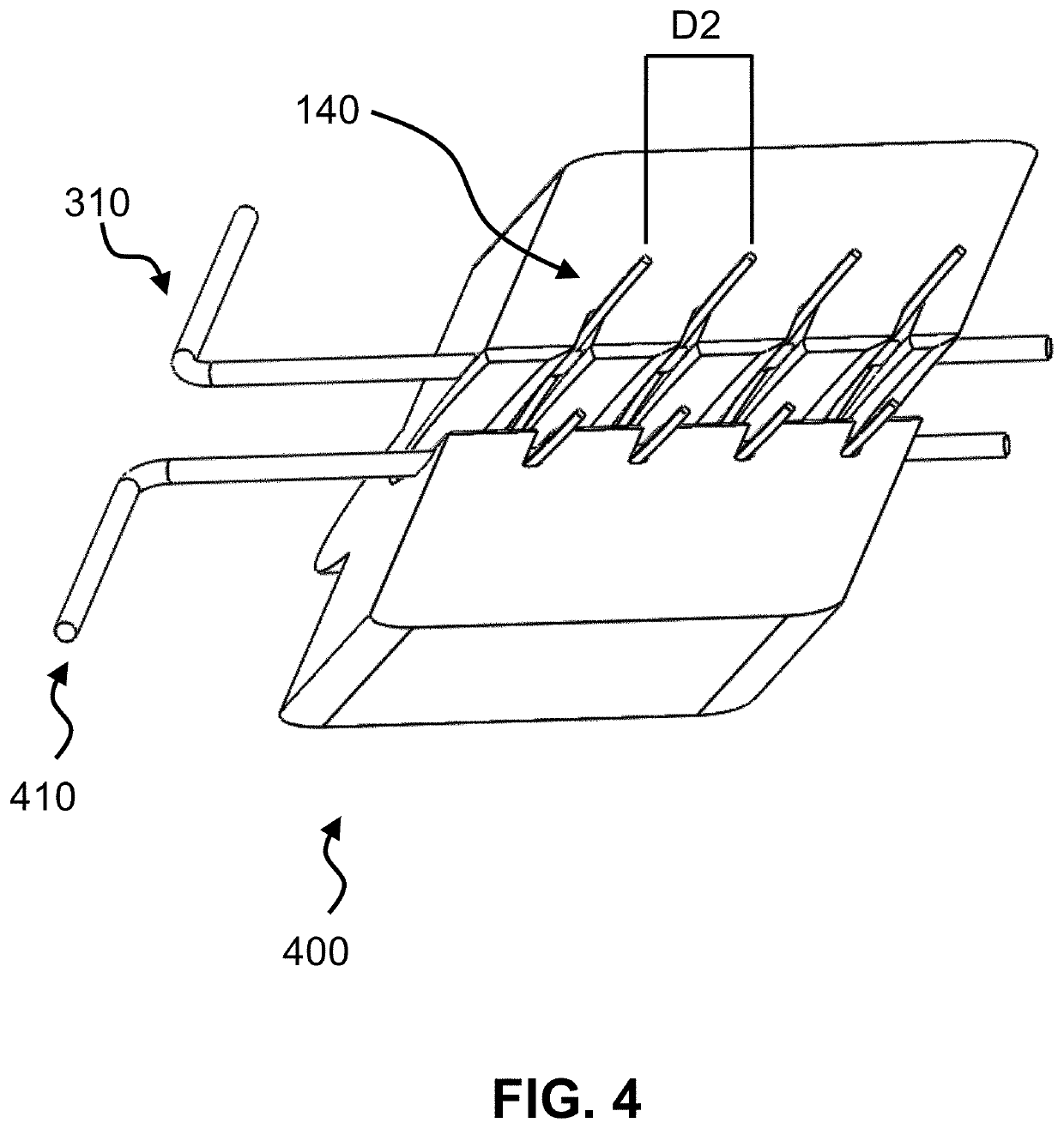Medical Device for Anastomosis
a medical device and anastomosis technology, applied in the field of medical devices, can solve the problems of heel buckling/ovalization/kinking, heel flattening, and/or heel buckling/ovalization/kinking, and achieve the effect of sufficient kink resistan
- Summary
- Abstract
- Description
- Claims
- Application Information
AI Technical Summary
Benefits of technology
Problems solved by technology
Method used
Image
Examples
Embodiment Construction
[0030]The present invention is a medical device incorporating a support element for the purposes of anastomosis. Examples of such a support element are a stent, an SRS, a coil, a wire, braid or any other type of support structure typically used in cardiovascular implants. The medical device has two tubular layers (inner layer 110, outer layer 120) that embed the support element 130 as well as two or more independent (separate) C-rings 140 near the end of the support element. A C-ring is defined as either a circular or oval ring that is not fully closed; i.e. has an opening, large enough to accommodate standard surgical scissors for axial slit creation without cutting through the ring strut. In one embodiment, the openings of the C-rings of the two or more independent C-rings are aligned with each other (see FIGS. 2-5). In an alternate embodiment, the C-rings could be closed rings.
[0031]Defining a longitudinal axis of the medical device, the medical device then distinguishes a (main)...
PUM
 Login to View More
Login to View More Abstract
Description
Claims
Application Information
 Login to View More
Login to View More - R&D
- Intellectual Property
- Life Sciences
- Materials
- Tech Scout
- Unparalleled Data Quality
- Higher Quality Content
- 60% Fewer Hallucinations
Browse by: Latest US Patents, China's latest patents, Technical Efficacy Thesaurus, Application Domain, Technology Topic, Popular Technical Reports.
© 2025 PatSnap. All rights reserved.Legal|Privacy policy|Modern Slavery Act Transparency Statement|Sitemap|About US| Contact US: help@patsnap.com



